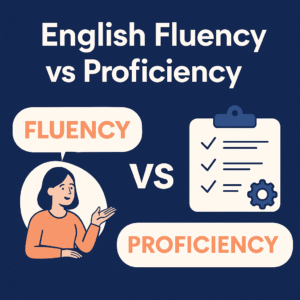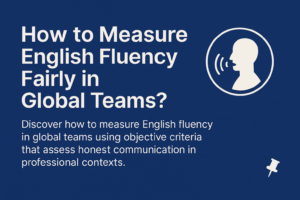Confession time: Last week I completely messed up a speaking assessment. There I was, trying to grade Maria’s presentation while simultaneously keeping my other 27 students from turning the classroom into a circus. By student number five, my rubric had coffee stains and my nerves were shot. Not my finest teaching moment.
Does this sound painfully familiar? Yeah, I thought so.
Fifteen years of teaching English, and I still haven’t found the perfect way to assess speaking skills. Some days I think I’m getting closer, other days… well, let’s just say I’ve considered taking up gardening instead.
Traditional Assessment Methods: The Mess We’re In
You know what’s funny? In teacher training, they make speaking assessment sound so straightforward. “Just use this rubric!” they say. “It’ll be fine!” they say. Ha!
Last Tuesday, I watched Jin—one of my most talkative students—completely freeze during her assessment. This is a kid who can debate the merits of different pizza toppings in English for 20 minutes straight. But put her in a formal assessment setting? Cricket chirps. Many students face speaking anxiety in these settings, making oral assessments even harder. Here’s why speaking English is the most challenging skill to master.
Half my students mysteriously develop stomach aches on assessment days. The other half perfect the art of looking busy while avoiding eye contact. And me? I’m just trying to figure out how to clone myself so I can properly assess 30 different conversations happening at once.
Sometimes I scribble notes so quickly they become hieroglyphics. Last month, I found an assessment note that just said “good?” with three question marks. What was good? Why the question marks? Your guess is as good as mine.
The Hidden Costs Nobody Talks About
Want to know something depressing? I actually calculated how much time I spend on traditional speaking assessments. Well, tried to—math isn’t my strong suit. But here’s a rough breakdown:
Started timing myself last semester. Fifteen minutes per student interview (when everything goes perfectly, which it never does). Another ten minutes trying to decipher my hasty notes. Five more minutes second-guessing my scoring decisions. Multiply that by 112 students…
Yeah. I stopped calculating after that. It was too depressing.
But here’s the real kicker—the thing that keeps me up at night. While I’m doing these one-on-one assessments, what’s happening with the rest of my class? Sure, I assign “independent work.” We all know how that goes. Last week I caught Marco teaching the entire back row how to make paper airplanes. In English, at least? Small victories, I guess.
And don’t even get me started on consistency. By student number 20, am I really giving the same quality of attention I gave to student number one? After my third coffee? With the classroom temperature steadily rising to sauna levels? Let’s be honest—probably not.
The Technology Plot Twist
So there I was, drowning in assessment papers, when my colleague Dave pokes his head in. “Try this,” he says, sliding his tablet across my desk. “It’s some AI thing for speaking assessment.” If you’re considering AI tools but aren’t sure where to start, this guide breaks down the best AI solutions for language teaching.
I’ll be honest—my first thought was, “Great, another tech ‘solution’ that’ll probably crash mid-class.” (Still traumatized from that time the digital whiteboard decided to update itself during parents’ evening.)
But here’s the thing—I was desperate enough to try anything. Even downloaded it during lunch break, which, if you know how much I hate change, is pretty significant.
Did it solve all my problems instantly? Nope. First week was a disaster. Couldn’t figure out how to use half the features, and somehow managed to delete an entire class’s worth of data. (Pro tip: Don’t try to learn new tech while eating spaghetti.)
When the Penny Finally Dropped
Remember Jin from earlier? The pizza debate champion who froze during formal assessments? Something interesting happened last month.
We were using this new assessment approach—more ongoing monitoring, less “stand up and perform” stuff. I noticed Jin was actually speaking more. Not just more—better. But here’s what really got me: she wasn’t even aware she was being assessed.
One day she comes up to me after class. “Miss, is it weird that I’m not scared anymore?” That’s when it clicked. We’d been so focused on measuring speaking that we’d forgotten about the actual speaking part.
And those paper airplane engineers in the back row? Turns out they can be pretty articulate when they’re not being put on the spot. Who knew?
The Messy Reality of Change
Let me be clear—switching to tech-supported assessment isn’t all rainbows and butterflies. Some days it works brilliantly. Other days… well, let’s just say technology and I have a love-hate relationship.
Last week the system flagged one of my quietest students as “highly participative.” Turned out he’d figured out how to game the system by mumbling continuously during group work. Clever kid. Wrong approach, but clever.
And you know what? Some students actually prefer the old way. Maria (yes, from the coffee-stained rubric incident) told me she likes having one big assessment to prepare for. “It’s like a performance,” she says. Fair enough.
But here’s what I’ve learned: it doesn’t have to be all or nothing. Sometimes I still do traditional assessments. Sometimes I let the AI do its thing. Sometimes I just sit back and watch my students teach each other slang I definitely shouldn’t understand.
Finding Your Sweet Spot
Look, let’s be real for a second. After fifteen years of teaching, if there’s one thing I’ve learned, it’s that there’s no one-size-fits-all solution. Some days I’m all about embracing the future. Other days I can barely get the printer to work.
My current approach? It’s a bit of a hodgepodge. Like last week, I used AI assessment during group discussions but pulled out my trusty old rubric for final presentations. One of my students called it “vintage assessment.” Thanks for making me feel ancient, kid.
Sometimes the best solutions come from complete disasters. Remember that time I accidentally deleted all that data? It forced me to actually talk to my students about their progress. Turns out they had some pretty good insights. Who would’ve thought?
What’s Actually Working Now
After a year of trial, error, and occasional technical meltdowns, here’s what’s working in my classroom:
Continuous assessment isn’t as scary as it sounds. Think of it like Netflix watching your viewing habits versus having to write a book report. (Bad analogy? Maybe. But you get the point.) Cambridge research on AI-powered marking explains how AI is transforming fluency evaluation, making assessments more accurate and efficient.
The kids are more relaxed. Except for Marco—he’s still making paper airplanes. But now he’s explaining the aerodynamics in English, so… progress?
Moving Forward (Without Losing Our Minds)
This is usually where I’m supposed to wrap everything up neatly with some profound conclusion. But honestly? We’re all still figuring this out.
What I can tell you is this: At Fluency Flow, we’re seeing teachers transform their assessment nightmares into something actually manageable. Not perfect—let’s not get carried away—but better. Try FluencyFlow today to see how AI can streamline fluency assessments and help students feel more confident in their speaking skills.
Remember Jin? She stopped by last week to tell me she’d nailed a presentation in her History class. No freezing, no panic. Just talking. That’s what this is all about.
Want to see what all this looks like in action? We’re not promising miracles (though coffee-proof rubrics would be nice). But we are offering a way to make speaking assessment less of a headache and more of a tool that actually helps.
Book a demo with us. Bring your skepticism—we’ve got plenty of that too. Let’s figure out how to make speaking assessment work for your classroom, paper airplanes and all.
And hey, if you’ve got your own assessment horror stories or unexpected victories, drop them in the comments. Because sometimes the best teaching ideas come from our biggest failures. Trust me, I’ve had plenty of both.





This is really interesting, You’re a very skilled blogger. I’ve joined your feed and look forward to seeking more of your magnificent post. Also, I’ve shared your site in my social networks!
There’s something almost meditative about your writing. The way you unfold ideas with such precision and care feels like watching a sculptor work — each word chipped away, each sentence shaped into something beautiful. It’s a slow, deliberate process that results in something truly remarkable.
This is a great point about lead generation for contractors. This post really helped me understand why it’s so important to have a strong web presence as a contractor.
I’m often to blogging and i really appreciate your content. The article has actually peaks my interest. I’m going to bookmark your web site and maintain checking for brand spanking new information.
This was beautiful Admin. Thank you for your reflections.